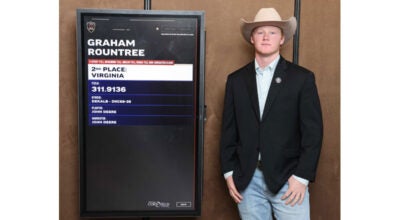Virtual school not a money saver
Published 5:01 pm Friday, October 30, 2020
|
Getting your Trinity Audio player ready...
|
FRANKLIN
Keeping school virtual through January isn’t saving Franklin City Public Schools any money.
In fact, it would be costing more if not for the $617,000 the division received earlier this year in Coronavirus Aid, Relief and Economic Security (CARES) Act funding — particularly for the 200 WiFi hotspots it has placed throughout the city for students to stay connected with their teachers.
“With a regular year’s budget, we wouldn’t have been able to afford 200 hotspots,” Superintendent Dr. Tamara Sterling told members of Franklin’s City Council Oct. 29. “Now, remember, you have 200 hotspots but you have to pay the bill every single month for the [data] plan, so you’re talking about well over $60,000 within the next two years for our students. And that’s just 200 … we may have more parents come and say we need to make certain our kids are connected, so 200 may stretch into 500.”
“Everyone is still physically working their hours,” School Board Chairwoman Amy Phillips added. “There is a preconceived notion that … the teachers are done at noon. That is not the case. As a matter of fact, when I left to come here tonight, it was a little after 6:30 and my child was on a Zoom meeting with one of her teachers. She’s been on a Zoom meeting at 9 o’clock at night with a teacher, so these teachers are working long days believe it or not, and in a lot of cases they’re working multiple devices at one time to be able to teach a child.”
“We have electronic versions of the textbooks, and each of those comes with a license, so … the costs are all still there,” Phillips said.
The division had already begun implementing a one-to-one student-to-laptop ratio at its schools prior to the start of the pandemic, but “you can’t put a preschooler on a laptop,” she continued. “They can’t read. They can’t type out sentences. So they need interactive devices like an iPad.”
School buses aren’t running except to deliver meals to students, but rather than furlough its bus drivers, the division reassigned them to work various positions in its central office.
“We’ve got one working as a receptionist,” Phillips said.
Cafeteria workers are also still employed, preparing lunches for delivery.
“We don’t have anyone that’s sitting at home and not getting paid,” she said.
Even with its normal and pandemic-related costs, the division isn’t in danger of exceeding its budget, Sterling assured the council members. All COVID-19-related costs to date have been covered with a combination of CARES money — all of which has been allocated to various departments — and additional grant funding, she said.
Earlier this month, Franklin’s School Board voted to continue virtual learning through the entire first semester, which ends Jan. 28, 2021, citing the results of a 122-person survey in which 70% said they were not in favor of the Board bringing back grades PreK-2 for in-person instruction.
“The younger learners are the most vulnerable learners when we talk about education … those first few years of school are the biggest fundamental years,” Phillips said, explaining why the division had focused on grades PreK-2 for reopening. “It’s when you’re learning to add and subtract, you’re learning to read, you’re learning your phonics. All of those are very detrimental to being able to learn in later years.”
When asked what specific dollar amount the division had spent to date on COVID-19-related expenses, Sterling told the paper she couldn’t provide an exact figure at the moment due to these expenses being ongoing.
“An end-of-semester report will be provided to the school board in February 2021,” she said.





